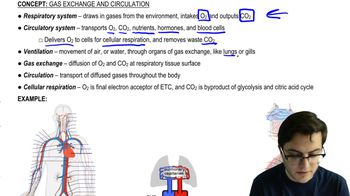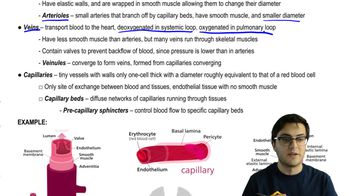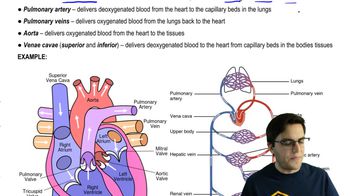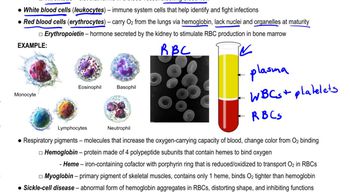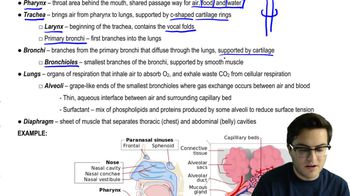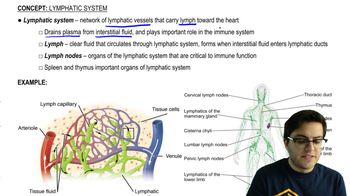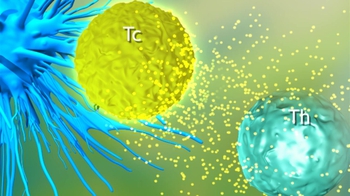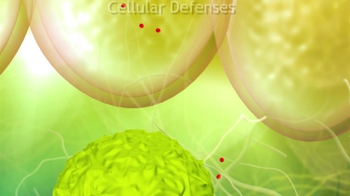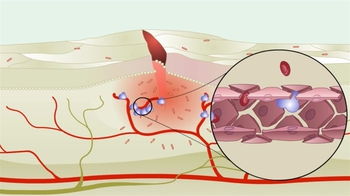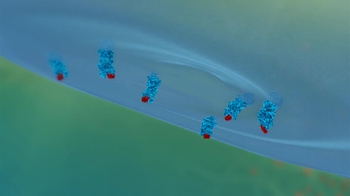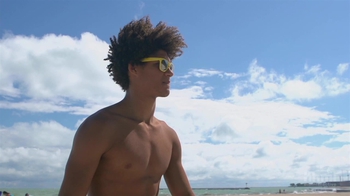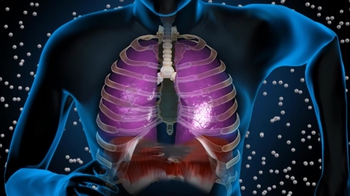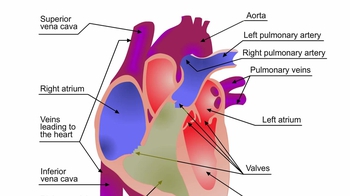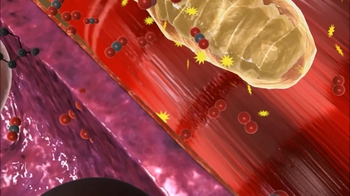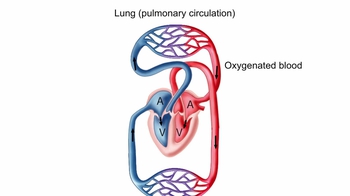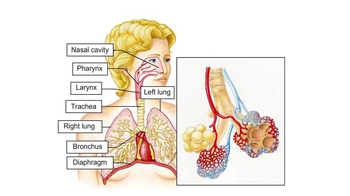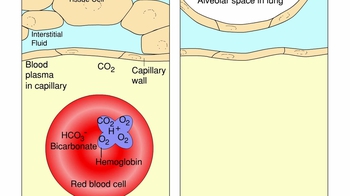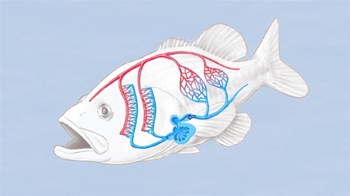40. Circulatory System
Circulatory and Respiratory Anatomy
40. Circulatory System
Circulatory and Respiratory Anatomy
Additional 29 creators.
Learn with other creators
Showing 32 of 32 videos
Practice this topic
- Multiple ChoiceWhich type of epithelial tissue would you suppose covers the gills of axolotls?
- Multiple ChoiceWhich of the following is a function of the circulatory system?
- Multiple ChoiceAn open circulatory system __________.
- Multiple ChoiceWhy do larger animals, such as a bullfrog, require a circulatory system, while animals such as a planarian do not?
- Open QuestionWhich of the following respiratory systems is not closely associated with a blood supply?a. the lungs of a vertebrateb. the gills of a fishc. the tracheal system of an insectd. the skin of an earthworm
- Open QuestionUse the following diagram to review the flow of blood through a human cardiovascular system. Label the indicated parts, highlight the vessels that carry oxygen-rich blood, and then trace the flow of blood by numbering the circles from 1 to 10, starting with 1 in the right ventricle. (When two locations are equivalent in the pathway, such as right and left lung capillaries or capillaries of top and lower portion of the body, assign them the same number.)
- Open QuestionWhich of the following statements regarding the insect tracheal system is/are correct? Select True or False for each statement.T/F Tracheae dilate and constrict during flight or other types of movement, functioning as a 'breathing' mechanism.T/F Spiracles open into the body cavity, allowing direct contact between the air and hemolymph.T/F Tracheae carry oxygen to alveoli; here the oxygen diffuses into the hemolymph to be delivered to tissues.T/F Spiracles can close to minimize water loss.
- Open QuestionBlood returning to the mammalian heart in a pulmonary vein drains first into thea. left atrium.b. right atrium.c. left ventricle.d. right ventricle.
